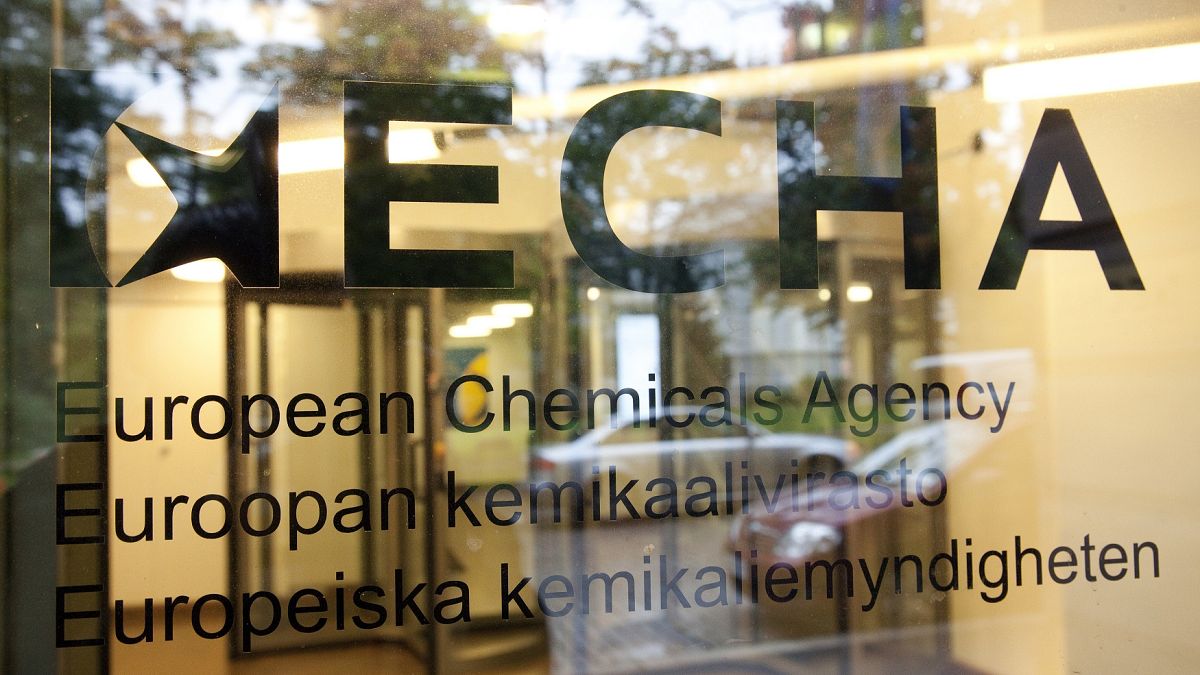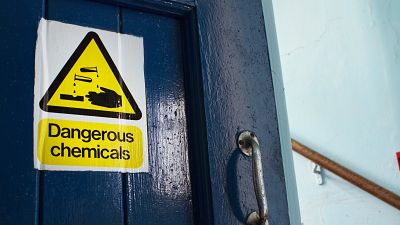The European Commission has drawn up strict criteria on when the use the most dangerous substances is justified, but with an overhaul of the EU's core chemicals regulation still on ice, green NGOs have urged a redoubling of efforts to limit pollution and health risks.
European Commission guidance on what constitutes the ‘essential use’ of dangerous substances divided opinion this week as policy makers and industry representatives gathered in Brussels to discuss future chemicals policy. Green groups issued a warning that the EU executive is failing to meet commitments to tackle pollution and health risks, pointing particularly to a shelved revision of the flagship REACH regulation.
“Better protection for human health, tackling pollution, and moving towards a toxic-free environment is our priority for the long run,” Environment Commissioner Virginijus Sinkevičius said on Tuesday (23 April) in a video message to open a two-day conference on the future of EU chemicals regulation, hosted by Belgium as holder of the rotating EU Council presidency.
The gathering came a day after the European Commission had set out guiding principles for assessing when the benefits to society of using a dangerous chemical outweigh the risks. The criteria for ‘essential use’, intended to nudge producers towards safer production processes and inform future policy making, met with mixed reaction from industry representatives, campaigners and academics.
Cristina De Avila, who heads a safe and sustainable chemicals unit at the Commission’s environment directorate, told conference attendees that applying the new essential use criteria would “help to increase regulatory efficiency and predictability for authorities and industry”, while acknowledging that the guidance would only have legal force if and when incorporated in concrete legislation.
The new criteria stipulate that an essential use of a restricted chemical is one where it is necessary for health or safety or ‘critical for the functioning of society’, and should only be permitted where there is ‘no acceptable alternative’ to the substance in question. The communication came as the European Chemicals Agency (ECHA) is deliberating on a keenly watched proposal to ban per- and polyfluoroalkyl substances (PFAS), known as ‘forever chemicals’ for their propensity to persist in the environment and accumulate in living organisms.
Ian Cousins, a professor of chemistry at Stockholm university, said his research suggested no alternatives were available for around 30% of applications of PFAS, mostly in industrial processes. He also pointed to resistance from industry to the proposed ban, which last year saw ECHA inundated with over 5,000 responses to a public consultation, many from companies or lobby groups outlining why their uses of the substances was indispensable.
“There are some PFAS…with no available alternatives, but that doesn’t mean they don’t exist, it just means that we haven’t found them,” Cousins elaborated. “It’s encouraging that there are so many alternatives…that are already available.” The researcher argued that stricter regulation of groups of harmful chemicals, of which PFAS are just one example, would encourage companies to look for safer alternatives.
Theresa Kjell, head of policy at the International Chemical Secretariat (ChemSec), which works with companies to help them substitute dangerous chemicals with safer alternatives, echoed Cousins’ words. There was “clear evidence that legislation drives innovation”, Kjell said.
Kjell said a large chunk of PFAS currently in use were “low hanging fruit”, such as the F-gases used in heat pumps and refrigeration systems, for which alternatives are readily available. She was confident that only a few current uses would be necessary in the long term: “There is never [no alternative] available – they might not be known, but they are there.”
The blanket PFAS ban would be the largest yet under EU legislation, covering a whole family of thousands of structurally related chemicals with uses ranging from water repellents, lubricant and non-stick coatings to refrigerant gases. But the new essential use guidance will not immediately impact the PFAS restriction process, Avila told Euronews on the sidelines of the event. “The concept is not part of REACH, and PFAS is under the current…framework,” she said.
But PFAS, although high profile pollution scandals have made them emblematic of the wider problem of toxic chemicals in the environment, are only one group of substances among over 20,000 chemicals registered with ECHA for production or use in the EU.
Regulatory reform
Under the REACH regime, chemicals have until now been assessed one by one, and it might take years for a substance to first be classified as being ‘of very high concern’ (dubbed an SVHC), and then another lengthy assessment before they are added to an ‘authorisation list’ – a de facto ban where permits for use are only granted on a case-by-case basis. Since the regulation entered into force in 2009, only 59 entries have been made on the list. Many of the chemicals named are still widely used.
The incumbent European Commission was due to deliver a proposal to revise REACH under its Chemicals Strategy for Sustainability (CSS), adopted in 2020 in an effort to speed up the process and, ultimately, meet the EU’s ‘zero pollution’ ambition by reducing the use and release into the environment of all harmful substances. The executive came under heavy fire from environmental groups when it shelved the project last October.
Speaking to Euronews on the sidelines of Tuesday’s conference, Avila repeated the official line: “At the end of our mandate is not the time to come up with legislation of the magnitude of the REACH revision.” Discussions and consultations are ongoing, she said, and the future of the revision proposal will be decided only after European elections in June and a new EU executive taking office in the autumn.
The event coincided with the European Environmental Bureau (EEB) publishing an analysis suggesting only one of 13 objectives outlined in the Commissions chemicals strategy had been fully achieved. A central criticism in the NGO umbrella group’s report was that “significant flaws” remain in the REACH regulation.
“Chemical firms give regulators unreliable hazard data in a large majority of cases,” the EEB said. “In the absence of strict enforcement mechanisms, it is rare that firms are judged violative and chemical companies go unpunished.” Moreover, the NGO alliance asserted that “industry lobbyists frequently cause paralysis” among officials and policy makers.
“As the EU approaches pivotal elections, the EEB calls on future leaders to prioritise the completion of the CSS. While the early steps of REACH 1.0 and the [chemicals strategy for sustainability] CSS were commendable, much work remains,” EEB head of chemicals policy Tatiana Santos said. “The upcoming Parliament and Commission must commit to building on this agenda and ensure a safer, toxic-free future for all.”
Notable progress was only made in revising rules on how to classify, label and package chemical substances and mixtures, according to the environmental group.
On the same day, the European Parliament gave its rubber stamp to a reform of the ten-year-old Classification, Labelling and Packaging Regulation, which will mean producers have to display more detailed and prominent hazard information on products from paints to cleaning products. It also bans companies from making ‘green claims’ about any products that contain hazardous chemicals, so they can no longer claim to be ‘sustainable’ or ‘eco-friendly’.
As the PFAS restriction proposal moves forward, and with further group restrictions likely in the future, stiff resistance can be expected from the chemicals industry. Sylvia Lemoine, deputy director-general of the European Chemical Industry Council (Cefic), said the principle of excluding uses of dangerous chemicals when they are not critical for society was “good on paper”, but it would add another layer of complexity to chemicals regulation in Europe.
“I just don’t see in practice…how it’s going to speed up the process,” Lemoine said. “Please, let’s think of how it’s going to be implemented, and who’s going to decide.”
But Simon Cogen, a chemicals policy specialist from the Belgian economy ministry, said excluding substances that are not demonstrably critical for the functioning of society would speed up the regulation of batches of harmful chemicals with similar properties. For those remaining, you check for viable, safer substitutes, he suggested. “It there are alternatives, leave it out,” he said. “That’s how you make group restriction manageable.”



